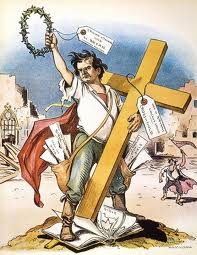The 19-year cycle curiously suggested by Jefferson shows up as another layer within cycle theory. This was the basis for both the ancient Hebrew and Babylonian calendars. The concept of a “leap” year was rather simple to understand. The Julian calendar was a direct calendar to measure time by solar cycles. The Hebrew and Babylonian calendars kept track of the sun by using the moon. The moon cycle was 19 years, amounting to 228 months, but it requires 235 months to equal a 19-year solar cycle. Adding these 7 months was rather arbitrary. The modern Hebrew calendar inserts the 7 months in an orderly fashion, one each during the 3rd, 6th, 8th, 11th, 14th, 17th, and 19th years of the cycle. This actually did not go into effect until 360AD. The point of this 19-year cycle is the acknowledgement that the moon, sun, and earth return to the same position in this triad once every 19 years.
There is also the periodicity and recurrence of eclipses governed by the Saros cycle, which is a period of approximately 6,585.3 days (18 years 11 days 8 hours). The Chaldeans knew this cycle as a period when lunar eclipses seemed to repeat themselves, but the cycle is applicable to solar eclipses as well.
There is a cycle to absolutely everything. The 19-year cycle is the realignment of the sun, moon, and the earth when they return to the same point in their relationship. It will show up in economics every so often, like the 19-year bear market in gold from 1980 into the 1999 low. However, it appears to end in a harmony of several cycles lining up, as one cannot find a regular 19-year cycle with consistent highs and lows.










